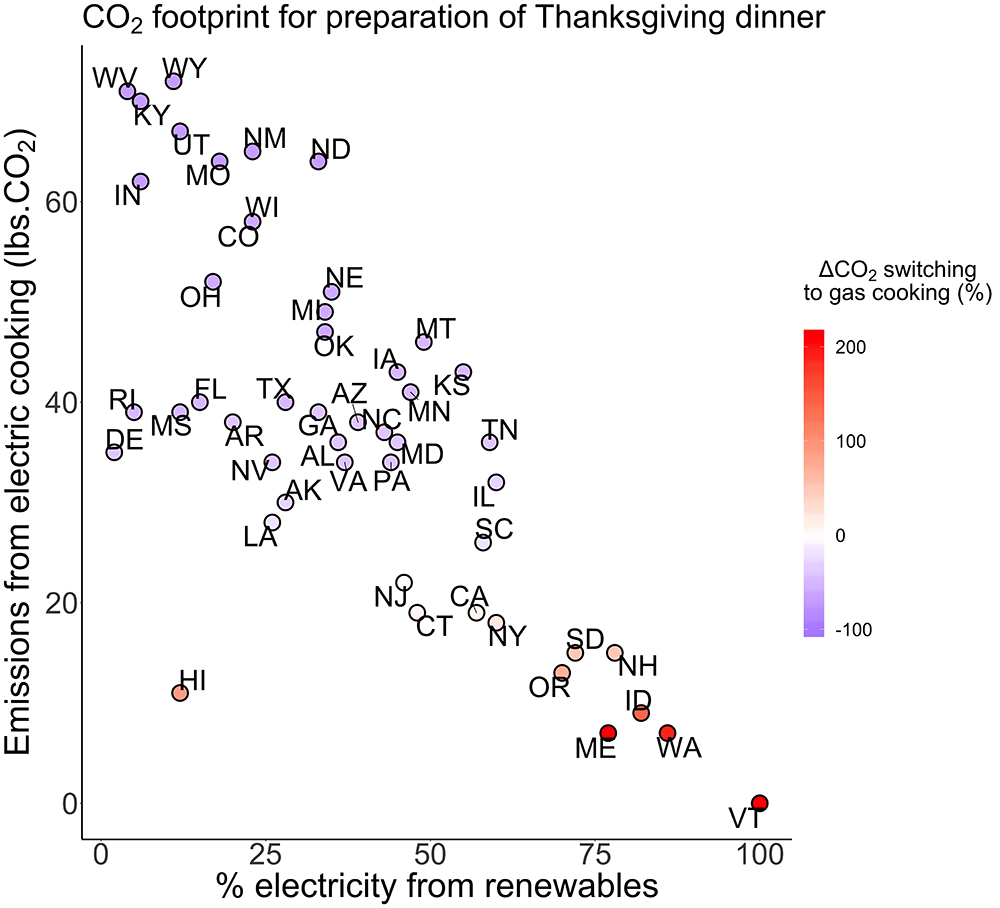Overeating at Thanksgiving has a carbon footprint
From the ingredients to the cooking to the travel, CMU researchers tally up the carbon footprint of Thanksgiving.
Thanksgiving is a cherished time for families to celebrate the tradition of coming together to enjoy a large meal. It also requires billions of miles of travel and over a billion pounds of food consumption. Choices made as to where to celebrate, how to get there, what to eat, and how to prepare the meal all have an environmental impact.
Building on two previous studies, a CMU research team has calculated the carbon footprint of the entire feast, factoring in round-trip travel and a ‘model menu’ of roast turkey stuffed with sausage and apples, green bean casserole, and pumpkin pie.
“Food production and meal preparation both contribute to our carbon footprint. For each ingredient used in each dish, we tracked its carbon emissions from ‘farm-to-fork,’” said Paul Fischbeck, professor of the departments of Engineering & Public Policy (EPP) and Social & Decision Sciences (SDS). “Production of the food combined with preparation of the meal contributes about 50 pounds of CO2 on average across the country."
For each ingredient used in each dish, we tracked its carbon emissions from ‘farm-to-fork.’
Paul Fischbeck, Professor, Engineering & Public Policy, Social & Decision Sciences
How the meal is cooked, whether by gas or an electric oven and range, makes a big different on the size of the carbon footprint. Since the carbon emissions from electric power generation varies considerably across states, cooking a 16-pound turkey in an electric oven in Wyoming, with its heavy reliance on coal power, emits 32 pounds of CO2. In Maine, where hydro power is abundant, cooking the same turkey in an electric oven emits less than 3 pounds. In many states, using gas to cook has a smaller footprint than electricity, because the displaced emissions usually come from coal. But for 11 states the reverse is true: electric cooking produces less CO2 than gas cooking.
The plot below shows how all 50 states compare, assuming the meal is cooked using an electric oven and range. The color scale indicates which states would have a reduced footprint if switching from electric cooking to gas cooking (like Wyoming), and which states would have a larger footprint when switching from electric to gas (like Maine). States where emissions increase are colored red, and states where emissions decrease are colored blue. Vermont, where almost all electricity comes from hydro power, is off-scale (emissions increase by 900%), but is colored red for clarity.

Source: College of Engineering
Regulations banning natural gas appliances in new home construction have been popping up in different parts of the country. Only in some states would such policies have an immediate positive environmental impact, depending on the fuel mix of power generation for that state.
Beyond the procuring and preparing of the meal, getting people to the table has its own associated emissions.
“Bringing relatives into town can easily exceed the carbon footprint of the meal,” said Orchi Banerjee, a recent graduate of SDS who led the research. “American cars emit close to one pound of CO2 per mile traveled. So, if your guests collectively drive more than 180 miles roundtrip, it may help the environment if they stayed home and cooked their own meal.”
Flying is a completely different story. For example, four guests each flying 600 miles roundtrip has a carbon footprint over ten times that of the Thanksgiving meal. Because of the large meal and overeating, guests who fly often weigh a pound or two more on their return flight. This “extra” weight is equivalent to adding a passenger or two to each flight, requiring slightly more fuel. This results in 20,000 tons of additional CO2 emissions for the post-holiday flights home.
The EPA has recently priced the “cost” of CO2 emission at 2.5 cents per pound. Adding another dollar or two to the cost of the meal to cover the meal’s footprint, and $20 to cover the footprint of a 1,000 mile flight would bring the total meal cost closer to its true value that considers economic damages from CO2 emissions. While that is perhaps not a lot compared to buying all of the ingredients for an individual meal at the grocery and buying an airline ticket, it does add up for the country.
“Eat in moderation, enjoy the guests, and travel safely," advised Fischbeck. “But whatever you do, don’t switch to a meal whose main course is beef. That could easily double the footprint of the feast.”
